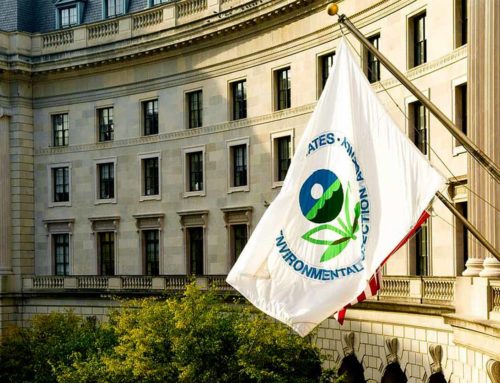Decades ago, federal support of the U.S. biofuels industry was meant to decrease our country’s reliance on fossil fuels and cut greenhouse gas (GHG) emissions. Advanced and cellulosic biofuels—derived from non-food sources like corn stalks and switchgrass and touted by President Bush in 2006—were intended to cut emissions in half (or more).
So much for that.
More than 15 years after the U.S. began mandating biofuels use, the industry has failed to deliver. Last week, the Environmental Protection Agency (EPA) announced Renewable Fuel Standard (RFS) mandates of 20.94 billion gallons in 2023. That is just over half of the 36-billion-gallon mandate Congress set in 2007. A grade of 58% = F, for more than one reason.
The vast majority of these mandated gallons—blended with U.S. gasoline and diesel—will be derived from food crops. Biofuels like corn ethanol and soy biodiesel will likely comprise 80% or more of the RFS government mandate this year. Corn and soybeans are also used for food, vegetable oil, and animal feed, to name just a few competing uses.
This wasn’t the plan. By now, the U.S. was supposed to produce 16 billion gallons of cellulosic, non-food biofuels from agricultural residues and perennial grasses. Instead, just five percent of this government mandate will be met this year due to technological and economic challenges facing the industry. It’s not for lack of resources because one thing the industry was not short on, however, was taxpayer subsidies: loan guarantees, tax breaks, and more.
Using food for fuel is a bad idea. It increases crop prices, which eventually increases food prices already at near-record highs. Worse yet, it hits consumers on tight budgets especially hard.
Instead of corn ethanol being a bridge to non-food biofuels, journalist and author Michael Grunwald said in our Budget Watchdog AF (All Federal) podcast this week that it is another “Bridge to Nowhere.” Wastebasket readers know all about what that means. Given the RFS’s old age, there is no doubt the cellulosic biofuel industry has failed. But that has not stopped never-ending truckloads of biofuel subsidies.
The RFS – and duplicative taxpayer subsidies piled on top—have cost taxpayers billions of dollars each year. Everyone from EPA to the National Academies of Sciences has concluded that biofuel tax credits distort markets and fail to benefit the climate, respectively. With the taxpayer costs of climate change rising every day, the U.S. can’t afford to push the gas pedal on failed solutions.
Unfortunately, that is exactly what Congress did with some of the provisions in the Inflation Reduction Act (IRA). Special interest tax breaks were created for aviation biofuels (still likely derived from food crops), and wasteful, duplicative tax breaks like the $3 billion/year biodiesel credit were extended. Congress shifted food-based biofuel subsidies into high gear instead of axing decade-long handouts.
Congress thankfully eliminated the most expensive tax credit for biofuels – the $6 billion-per-year ethanol tax credit (known as VEETC)—in 2011. However, as happens all too often in Washington, a bait and switch emerged. The U.S. Department of Agriculture (USDA) reoriented the Rural Energy for America Program (REAP) to cater to the corn ethanol industry, a favorite Washington special interest. Corn was king once again while hungry people and taxpayers lost. More than $3 million was squandered on food-based biofuel spending for specialized gas pumps dispensing corn ethanol blends like 15 and 85 percent ethanol (E15 and E85, respectively).
Congress later ended USDA’s practice of shifting wind and solar funding to a failed climate solution – corn ethanol. Instead of adhering to Congressional intent, however, USDA pulled $300 million in taxpayer subsidies out of thin air through the Commodity Credit Corporation (CCC). TCS awarded then (and now) Secretary Vilsack a Golden Fleece award for wasting taxpayer dollars (another parallel with the Bridge to Nowhere—also a Golden Fleece “winner”). Fast forward to this week: USDA announced another $500 million in biofuel infrastructure projects, this time through IRA. The beneficiary list includes owners of fueling stations such as MK Chevron in CA, Highway Amoco Inc. in MN, and Texas Petroleum Inc. in CA.
Corn ethanol’s subsidy spigot never shuts off. The RFS already mandates 15 billion gallons of corn ethanol be blended with gasoline each year. Not only are the lucrative subsidies unnecessary, but U.S. drivers would already fill up with nearly the same amount of ethanol with no government mandate or subsidies whatsoever. (Ethanol is needed to enhance octane content of gasoline.)
Congress—and the Administration—must stop pumping more taxpayer subsidies into the mature, food-based biofuels industry. To get our nation’s debt under control, sacred cows must be eliminated or else taxpayers, the climate, and consumers will (again) be left with the tab.














Get Social